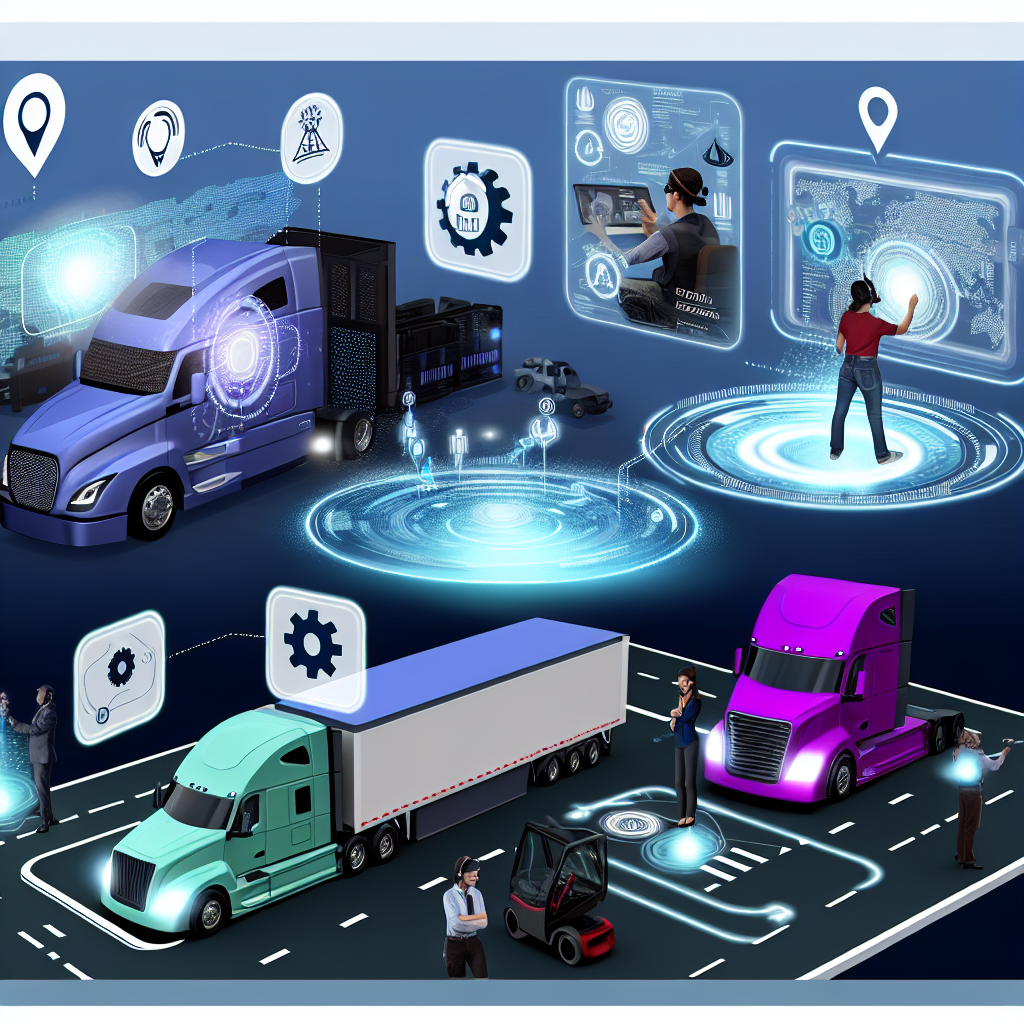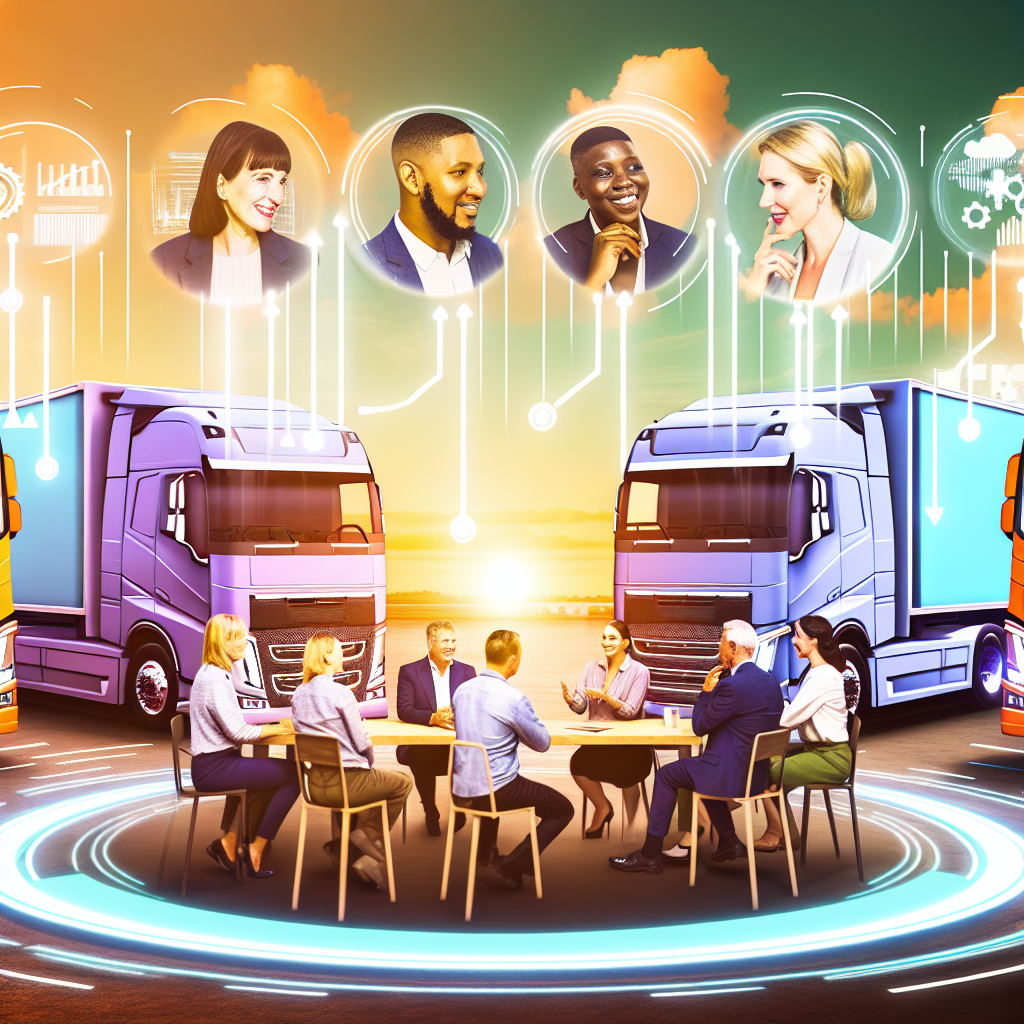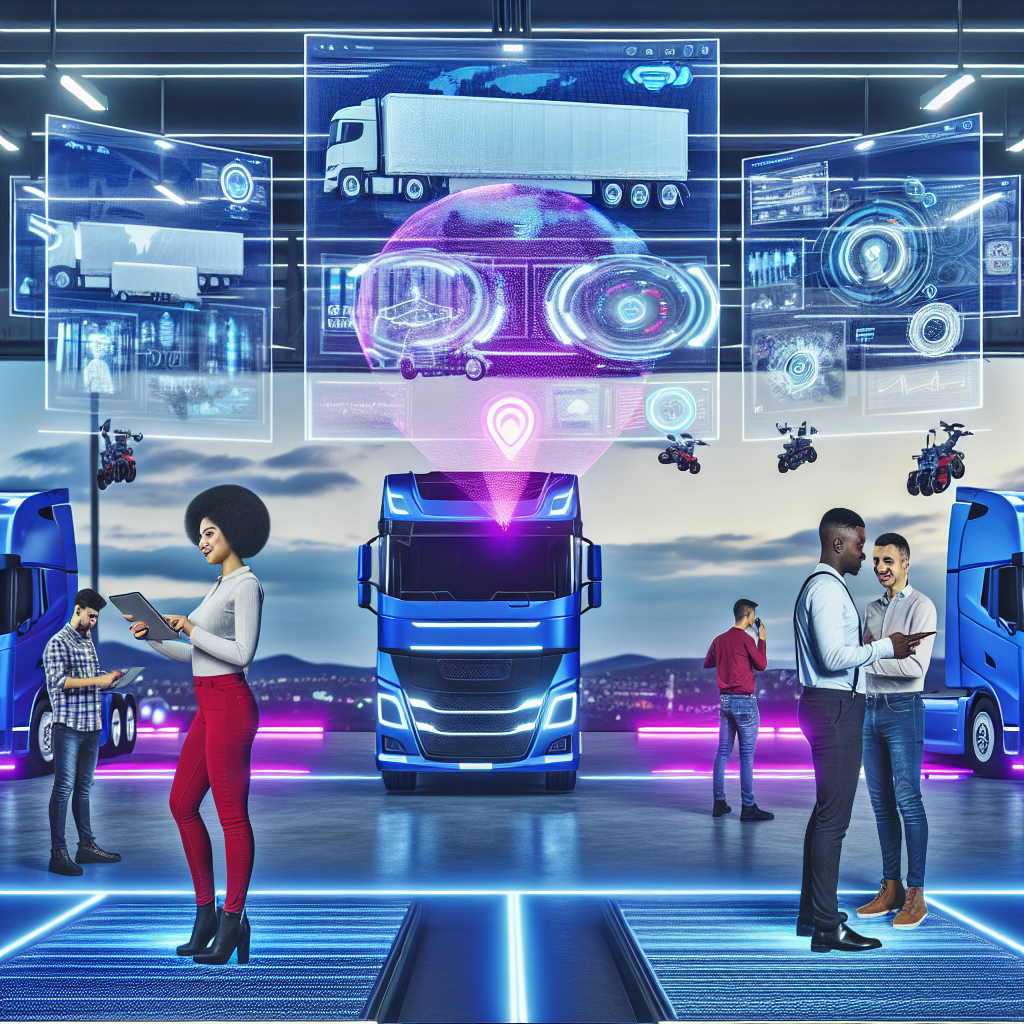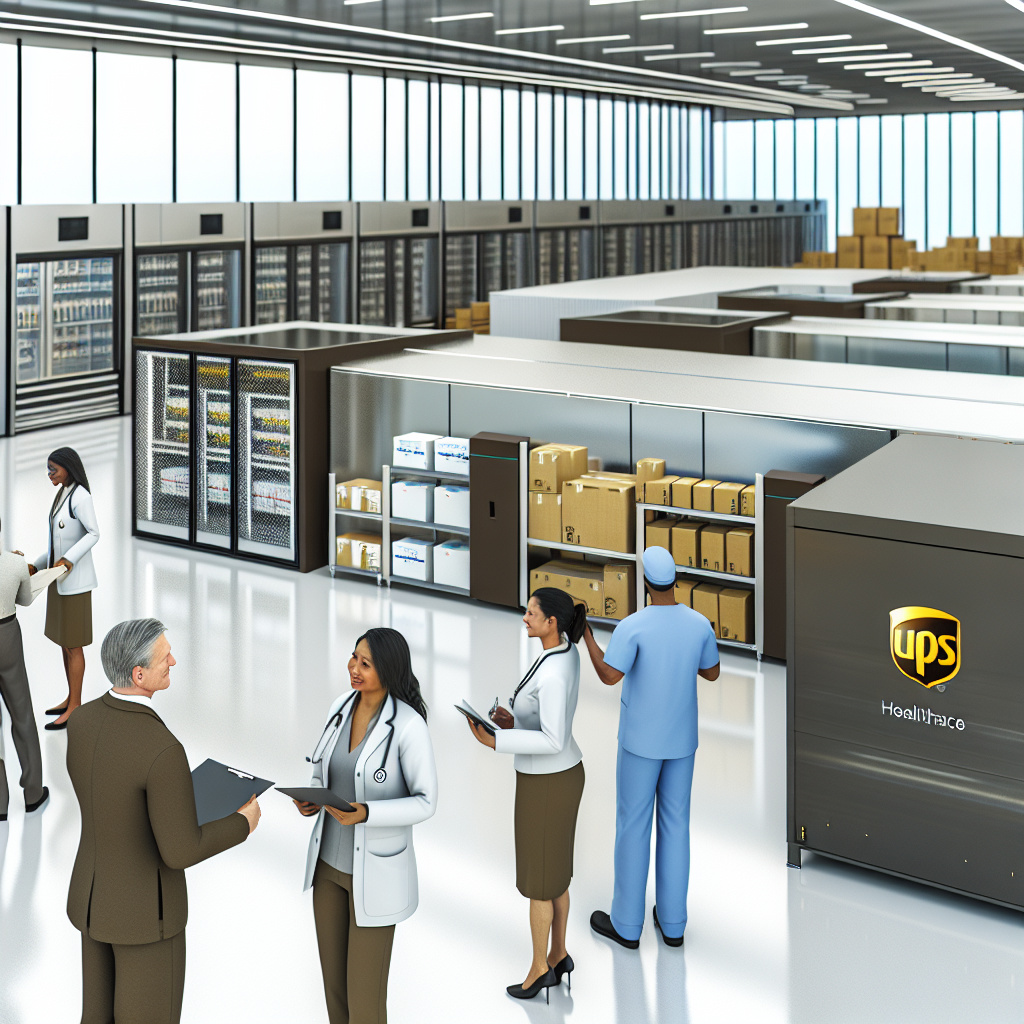In the evolving landscape of the trucking industry, the phrase investment in people emerges as a guiding principle amid the accelerating wave of digital innovation. As the industry faces profound challenges, such as a projected shortage of over 78,000 qualified drivers by 2022 that is expected to double by 2031, the need for a balanced approach has never been clearer. While technologies like AI promise enhanced operational efficiency, companies that neglect the human element risk falling behind. In fact, studies show that 65% of businesses are increasing their upskilling efforts, recognizing that cultivating talent and fostering an inclusive culture is essential for long-term success (zipdo.co).
During the discussions at the Bridging the Barriers event, industry executives stressed that culture, training, and employee engagement must go hand-in-hand with technological advancements. As Brad Bayne, VP of Strategic Initiatives at Duncan and Son Lines/4 Gen Logistics, points out, “We want drivers to feel treated well and made a point to get them involved very early… I now have drivers asking me, when are we going to get to drive them?” This illustrates how a people-first strategy can often lead to smoother transitions and greater acceptance of digital tools.
As the trucking industry accelerates towards a more automated future, it becomes clear that an investment in people may well determine who thrives and who falters in this rapidly changing environment. Understanding the vital role of company culture serves as a crucial step in this balanced approach, where recognizing and rewarding positive behaviors is fundamental. Let us delve into the importance of fostering a supportive company culture that aligns with these evolving workforce dynamics.
The Importance of Company Culture
Company culture is vital in shaping employee morale and retention in any organization. A positive culture creates an environment where employees feel valued and supported. This greatly enhances job satisfaction.
When individuals believe in their company’s mission and values, they become more engaged and motivated. As the saying goes, “Culture is defined by what companies reward and what they refuse to tolerate.” Leaders must shape their organization’s culture by recognizing desired behaviors and holding teams accountable.
Understanding what motivates employees helps organizations adopt a people-first approach, particularly in trucking. Employees connected to their company’s goals and treated fairly tend to stay longer and contribute more. On the other hand, a negative culture often leads to high turnover rates. Employees frequently leave to find workplaces where they feel appreciated.
For example, studies reveal that almost 40% of employees might consider leaving due to poor company culture.
Industry leaders agree on the need to invest in the human element alongside technology. During discussions at events focusing on digital transformation, executives emphasized that successful innovation should accompany a commitment to employee well-being. A positive culture not only boosts retention and morale but also increases productivity. Satisfied employees are more enthusiastic and motivated to contribute.
Companies like Zappos and Patagonia show how a strong culture leads to high employee satisfaction and customer loyalty. These firms illustrate that when employees feel supported, they take ownership of their roles and provide excellent service. In the fast-evolving trucking industry, a solid company culture can be a game-changer, fostering greater acceptance of technology and creating a stronger workforce.
| Digital Tool | Effectiveness | Employee Acceptance | Training Duration |
|---|---|---|---|
| Artificial Intelligence | High | Moderate to High | 1-2 weeks |
| Automation | Very High | Moderate | 1 week |
| Cross-training | Moderate | High | 3 months |
| Virtual Reality (VR) | Moderate to High | Low to Moderate | 2 weeks |
| Smart Sorting Systems | High | Moderate | 1 week |
This table summarizes various digital tools used in the trucking industry, examining their effectiveness, employee acceptance, and the duration required for proper training. With the increasing adoption of these technologies, understanding their impact on the workforce is crucial for developing a road map to successful integration.
Effective Training and Onboarding Processes
In the trucking industry, effective training and onboarding processes are essential for ensuring that new drivers can quickly become productive team members. By blending technological tools with human interaction, companies can significantly reduce training times while enhancing the onboarding experience. This integrated approach leverages various advancements in technology while maintaining the crucial human touch necessary for long-term success.
Technology-Driven Training Initiatives
One strategy that has proven effective is the use of online training platforms. These platforms allow new drivers to complete much of their orientation remotely, reducing traditional training durations from several days down to as little as one or two days. This transformation saves costs associated with travel, accommodation, and staff hours, which can amount to $1,000 per new driver [Infiniti Workforce].
Incorporating Artificial Intelligence (AI) into the onboarding process has also shown promising results. AI systems can automate repetitive tasks, enabling a tailored onboarding experience unique to each new hire. This has allowed companies to report a staggering 53% decrease in onboarding time and a notable 30% rise in employee retention rates [Itacit].
Virtual Reality (VR) has emerged as another powerful training tool in the trucking sector. Through simulation-based training, new drivers can engage in real-world scenarios without the risks associated with on-the-road training. Organizations using VR have experienced a 25% increase in driver retention and a 50% reduction in the duration required for new hires to integrate into company culture effectively [Vorecol].
Emphasizing Human Touch
Despite the impressive benefits of technology, human interaction remains a cornerstone of effective training. Assigning mentors or onboarding buddies can foster an environment of support, helping new drivers navigate both their responsibilities and the company culture. This personalized guidance is instrumental in improving job satisfaction and boosting retention rates [HR Fraternity].
Case Study: Purolator and Innocon
A notable example of effective training practices can be observed at Purolator, which achieved a remarkable reduction in training times from weeks to mere hours through the utilization of automation in their processes. This transformation allows for a more streamlined onboarding experience, setting a precedent for other companies. On the other hand, Innocon relies on a more traditional cross-training model that spans three months, a period during which employees familiarize themselves with various roles, ensuring they have a thorough understanding of operations before assuming full responsibilities.
In conclusion, by harmonizing technological advancements with essential human interaction, trucking companies can create robust training and onboarding frameworks that not only cut down on preparatory time but also contribute to a culture of support and readiness, ultimately benefiting both employees and the organization as a whole.

Generational Shifts in the Workforce
As the dynamics of the workforce continue to evolve, generational shifts play a critical role in shaping organizational culture and operational strategies. Today’s workforce comprises varied age groups, from Baby Boomers nearing retirement to Millennials and Gen Z who prioritize different values and work experiences. This diversity poses challenges but also provides unique opportunities for companies willing to adapt their strategies and embrace change.
One significant impact of these generational shifts is the varying expectations regarding work-life balance, career progression, and workplace culture. Younger generations often seek flexibility in their roles, valuing work environments that support their personal lives and growth ambitions. For instance, many Millennials and Gen Z workers prioritize organizations that align with their personal values, emphasizing social responsibility and ethical practices. As the saying goes, “We can’t just say, ‘Do what we did.’ We have to adapt.” This mindset encourages companies to rethink their traditional approaches and develop workplace policies that resonate with the newer generations.
Additionally, communication styles and preferences can differ widely across age groups. Younger employees may prefer digital communication tools, while their older counterparts might be more comfortable with face-to-face interactions. Adapting to these preferences is crucial for improving collaboration and fostering a unified company culture. Implementing flexible communication strategies can help bridge the gap between generations and create an inclusive environment where all contributions are valued.
To navigate these shifts successfully, companies should invest in tailored training and development programs that cater to the diverse needs of their workforce. Offering mentorship opportunities where experienced employees guide younger ones can facilitate knowledge transfer and mutual understanding. Moreover, creating spaces where employees from different generations can collaborate on projects allows for a fusion of perspectives that can lead to innovative solutions.
Moreover, top executives must acknowledge the necessity of adjusting leadership styles to be more inclusive. Leaders who actively engage with their teams and seek feedback can ensure that all voices are heard, fostering a sense of belonging among employees. As highlighted by industry leaders, balancing technological innovation with people-first strategies leads to a more resilient organization that can thrive amidst changing workforce dynamics.
In summary, understanding and embracing the generational shifts in the workforce is paramount for companies that aspire to remain competitive. By adapting their strategies to accommodate diverse employee needs, organizations can cultivate an engaged workforce that drives success in today’s fast-paced business landscape.
In the Trucking Industry
The adoption of digital tools is becoming essential for improving operational efficiency, yet it brings along its own set of challenges. Recent data highlights several aspects of employee adoption and the hurdles faced.
Employee Acceptance Rates and Training Initiatives
-
Digital Platform Usage:
55% of drivers favor using digital platforms for route navigation, and 52% use mobile apps for compliance and reporting. Source
-
Upskilling Efforts:
58% of trucking companies have bolstered their investment in upskilling initiatives within the last two years, while 72% of fleet managers view ongoing upskilling as crucial for adapting to technological advancements. Source
Challenges in Adoption
-
Resistance to Change:
64% of organizations identify employee resistance as a major hurdle in embracing new technologies. Source
-
Technical Integration Issues:
58% of firms encounter difficulties in merging new scheduling systems with existing HR, payroll, and operational technologies. Source
-
Inadequate Training:
71% of the failed technology adoption cases can be attributed to insufficient training. Source
Overall Trends in Digital Tool Integration
-
Adoption Rates:
73% of trucking companies have incorporated digital tools to enhance fleet management, and 65% perceive digital transformation as vital for maintaining competitiveness. Source
-
Investment Plans:
62% of trucking firms are planning investments exceeding $1 million in digital technologies over the next two years. Source
-
Operational Improvements:
65% of fleet operators have noted improved efficiencies due to digital solutions, with 66% reporting a 15-20% reduction in maintenance costs post-integration. Source
In summary, while the trucking industry is on a path toward digitalization, it must confront and mitigate challenges like employee resistance, technological integration problems, and training deficiencies to ensure successful implementation of these digital solutions.
Leadership and Communication in Technology-Driven Organizations
Transitioning to a technology-driven yet people-centric approach in the trucking industry hinges significantly on effective leadership and communication. Leaders must not only understand the tools at their disposal but also guide their teams through the changes that accompany digital innovation. Agility, the capacity to adapt quickly to new technologies and methods, is essential. Effective leadership can nurture this agility by fostering an open communication climate and promoting a culture of learning and adaptability.
Today’s leaders face the challenge of ensuring that all employees, particularly those resistant to change, feel included in the conversation about new technologies. Open communication is vital for minimizing fear and uncertainty. As organizations introduce advanced digital tools, leaders should actively engage with their teams, solicit feedback, and encourage discussion about the tools and methodologies being implemented. This dialogue helps employees feel valued and reinforces the idea that the organization prioritizes human resources alongside technological investments.
Moreover, effective communication helps to bridge generational divides within the workforce. Younger employees may prefer digital modes of communication, while more experienced team members might favor face-to-face interactions. Leaders who can adapt their communication style to meet diverse needs are better positioned to foster collaboration, enhancing the organizational culture necessary for successful tech adoption.
Agility in adapting to new technologies is not only about speed but also about learning from experiences. Leaders play a key role in modeling and reinforcing this mindset throughout the organization. By promoting continuous learning and encouraging team members to embrace challenges, leaders can cultivate a workforce that is resilient and adaptable to the ever-changing technological landscape.
In summary, leadership and effective communication are paramount in transitioning to a technology-driven, people-centric approach. It enables organizations not only to innovate but to do so in a way that respects and involves their most valuable asset—their people. As the trucking industry continues to evolve, organizations that master these components stand to gain a significant competitive advantage.

In conclusion, balancing digital innovation with people-first strategies is vital for success in the trucking industry. As we’ve seen throughout this article, the challenges posed by rapid technological change necessitate a thoughtful approach that values the essential role of a well-supported workforce. Investing in people alongside advanced digital tools not only fosters a more engaged and resilient workforce but also ensures long-term organizational sustainability.
Industry leaders emphasize that a strong culture of support, effective training programs, and open communication are fundamental elements of this balance. Companies are encouraged to embrace the opportunity to invest in their employees as they adopt new technologies. By doing so, they can enhance employee satisfaction, boost retention rates, and ultimately drive their business toward success.
In the words of Lance Craig, President and CEO of Craig Transportation,
“We work really hard at trying to invest in our people.”
This philosophy underlines the importance of treating drivers well and validating their contributions, which can lead to significant improvements in retention and morale. A practical example is GP Transco, a company that effectively integrates a people-first strategy with digital innovation. Their proprietary OpenRoad TMS not only streamlines operations but also fosters a workplace environment where drivers feel valued and heard.
It’s time for organizations in trucking to prioritize their human capital just as much as their digital resources. Let this be a call-to-action for all companies in the industry: commit to investing in your workforce. Make a concerted effort to design policies that do not just accommodate technology, but also foster a culture where people thrive. The road ahead is clear—prioritize people, harness innovation, and secure a competitive edge in the ever-evolving landscape of trucking.
Investment in People in the Trucking Industry
In the evolving landscape of the trucking industry, the phrase “investment in people” emerges as a guiding principle amid the accelerating wave of digital innovation. As the industry faces profound challenges, such as a projected shortage of over 78,000 qualified drivers by 2022, that is expected to double by 2031, the need for a balanced approach has never been clearer. While technologies like AI promise enhanced operational efficiency, companies that neglect the human element risk falling behind. In fact, studies show that 65% of businesses are increasing their upskilling efforts, recognizing that cultivating talent and fostering an inclusive culture is essential for long-term success [zipdo.co].
During the discussions at the Bridging the Barriers event, industry executives stressed that culture, training, and employee engagement must go hand-in-hand with technological advancements. As Brad Bayne, VP of Strategic Initiatives at Duncan and Son Lines/4 Gen Logistics, points out, “We want drivers to feel treated well and made a point to get them involved very early… I now have drivers asking me, when are we going to get to drive them?” This illustrates how a people-first strategy can often lead to smoother transitions and greater acceptance of digital tools.
As the trucking industry accelerates towards a more automated future, it becomes clear that an investment in people may well determine who thrives and who falters in this rapidly changing environment. Understanding the vital role of company culture serves as a crucial step in this balanced approach, where recognizing and rewarding positive behaviors is fundamental. Let us delve into the importance of fostering a supportive company culture that aligns with these evolving workforce dynamics.
The Importance of Company Culture
Company culture is vital in shaping employee morale and retention in any organization. A positive culture creates an environment where employees feel valued and supported, which greatly enhances job satisfaction.
When individuals believe in their company’s mission and values, they become more engaged and motivated. As the saying goes, “Culture is defined by what companies reward and what they refuse to tolerate.” Leaders must shape their organization’s culture by recognizing desired behaviors and holding teams accountable.
Understanding what motivates employees helps organizations adopt a people-first approach, particularly in trucking. Employee retention strategies that foster a connection to the company’s goals and ensure that employees are treated fairly tend to lead to longer tenures and greater contributions. On the other hand, a negative culture often leads to high turnover rates. Employees frequently leave to find workplaces where they feel appreciated.
For example, studies reveal that almost 40% of employees might consider leaving due to poor company culture.
Industry leaders agree on the need to invest in the human element alongside technology. During discussions at events focusing on digital transformation, executives emphasized that successful innovation should accompany a commitment to staff well-being. A positive culture not only boosts retention and morale but also increases productivity. Satisfied employees are more enthusiastic and motivated to contribute.
Companies like Zappos and Patagonia show how a strong culture leads to high employee satisfaction and customer loyalty. These firms illustrate that when employees feel supported, they take ownership of their roles and provide excellent service. In the fast-evolving trucking industry, a solid company culture can be a game-changer, fostering greater acceptance of technology and creating a stronger workforce.
| Digital Tool | Effectiveness | Employee Acceptance | Training Duration |
|---|---|---|---|
| Artificial Intelligence | High | Moderate to High | 1-2 weeks |
| Automation | Very High | Moderate | 1 week |
| Cross-training | Moderate | High | 3 months |
| Virtual Reality (VR) | Moderate to High | Low to Moderate | 2 weeks |
| Smart Sorting Systems | High | Moderate | 1 week |
This table summarizes various digital tools used in the trucking industry, examining their effectiveness, employee acceptance, and the duration required for proper training. With the increasing adoption of these technologies, understanding their impact on the workforce is crucial for developing a roadmap to successful integration.
Effective Training and Onboarding Processes
In the trucking industry, effective training and onboarding processes are essential for ensuring that new drivers can quickly become productive team members. By blending technological tools with human interaction, companies can significantly reduce training times while enhancing the onboarding experience. This integrated approach leverages advancements in technology while maintaining the crucial human touch necessary for long-term success.
Technology-Driven Training Initiatives
One strategy that has proven effective is the use of online training platforms. These platforms allow new drivers to complete much of their orientation remotely, reducing traditional training durations from several days down to as little as one or two days. This transformation saves costs associated with travel, accommodation, and staff hours, which can amount to $1,000 per new driver [Infiniti Workforce].
Incorporating Artificial Intelligence (AI) into the onboarding process has also shown promising results. AI systems can automate repetitive tasks, enabling a tailored onboarding experience unique to each new hire. This has allowed companies to report a staggering 53% decrease in onboarding time and a notable 30% rise in employee retention rates [Itacit].
Virtual Reality (VR) has emerged as another powerful training tool in the trucking sector. Through simulation-based training, new drivers can engage in real-world scenarios without the risks associated with on-the-road training. Organizations using VR have experienced a 25% increase in driver retention and a 50% reduction in the duration required for new hires to integrate into company culture effectively [Vorecol].
Emphasizing Human Touch
Despite the impressive benefits of technology, human interaction remains a cornerstone of effective training. Assigning mentors or onboarding buddies can foster an environment of support, helping new drivers navigate both their responsibilities and the company culture. This personalized guidance is instrumental in improving job satisfaction and boosting retention rates [HR Fraternity].
Case Study: Purolator and Innocon
A notable example of effective training practices can be observed at Purolator, which achieved a remarkable reduction in training times from weeks to mere hours through the utilization of automation in their processes. This transformation allows for a more streamlined onboarding experience, setting a precedent for other companies. On the other hand, Innocon relies on a more traditional cross-training model that spans three months, a period during which employees familiarize themselves with various roles, ensuring they have a thorough understanding of operations before assuming full responsibilities.
In conclusion, by harmonizing technological advancements with essential human interaction, trucking companies can create robust training and onboarding frameworks that not only cut down on preparatory time but also contribute to a culture of support and readiness, ultimately benefiting both employees and the organization as a whole.
Generational Shifts in the Workforce
As the dynamics of the workforce continue to evolve, generational shifts play a critical role in shaping organizational culture and operational strategies. Today’s workforce comprises varied age groups, from Baby Boomers nearing retirement to Millennials and Gen Z who prioritize different values and work experiences. This diversity poses challenges but also provides unique opportunities for companies willing to adapt their strategies and embrace change.
One significant impact of these generational shifts is the varying expectations regarding work-life balance, career progression, and workplace culture. Younger generations often seek flexibility in their roles, valuing work environments that support their personal lives and growth ambitions. For instance, many Millennials and Gen Z workers prioritize organizations that align with their personal values, emphasizing social responsibility and ethical practices. As the saying goes, “We can’t just say, ‘Do what we did.’ We have to adapt.” This mindset encourages companies to rethink their traditional approaches and develop workplace policies that resonate with the newer generations.
Additionally, communication styles and preferences can differ widely across age groups. Younger employees may prefer digital communication tools, while their older counterparts might be more comfortable with face-to-face interactions. Adapting to these preferences is crucial for improving collaboration and fostering a unified company culture. Implementing flexible communication strategies can help bridge the gap between generations and create an inclusive environment where all contributions are valued.
To navigate these shifts successfully, companies should invest in tailored training and development programs that cater to the diverse needs of their workforce. Offering mentorship opportunities where experienced employees guide younger ones can facilitate knowledge transfer and mutual understanding. Moreover, creating spaces where employees from different generations can collaborate on projects allows for a fusion of perspectives that can lead to innovative solutions.
Moreover, top executives must acknowledge the necessity of adjusting leadership styles to be more inclusive. Leaders who actively engage with their teams and seek feedback can ensure that all voices are heard, fostering a sense of belonging among employees. As highlighted by industry leaders, balancing technological innovation with people-first strategies leads to a more resilient organization that can thrive amidst changing workforce dynamics.
In summary, understanding and embracing the generational shifts in the workforce is paramount for companies that aspire to remain competitive. By adapting their strategies to accommodate diverse employee needs, organizations can cultivate an engaged workforce that drives success in today’s fast-paced business landscape.
Employee Acceptance Rates and Training Initiatives
- Digital Platform Usage:
- 55% of drivers favor using digital platforms for route navigation, and 52% use mobile apps for compliance and reporting. [zipdo.co]
- Upskilling Efforts:
- 58% of trucking companies have bolstered their investment in upskilling initiatives within the last two years, while 72% of fleet managers view ongoing upskilling as crucial for adapting to technological advancements. [worldmetrics.org]
Challenges in Adoption
- Resistance to Change:
- 64% of organizations identify employee resistance as a major hurdle in embracing new technologies. [myshyft.com]
- Technical Integration Issues:
- 58% of firms encounter difficulties in merging new scheduling systems with existing HR, payroll, and operational technologies. [myshyft.com]
- Inadequate Training:
- 71% of the failed technology adoption cases can be attributed to insufficient training. [myshyft.com]
Overall Trends in Digital Tool Integration
- Adoption Rates:
- 73% of trucking companies have incorporated digital tools to enhance fleet management, and 65% perceive digital transformation as vital for maintaining competitiveness. [zipdo.co]
- Investment Plans:
- 62% of trucking firms are planning investments exceeding $1 million in digital technologies over the next two years. [zipdo.co]
- Operational Improvements:
- 65% of fleet operators have noted improved efficiencies due to digital solutions, with 66% reporting a 15-20% reduction in maintenance costs post-integration. [zipdo.co]
In summary, while the trucking industry is on a path toward digitalization, it must confront and mitigate challenges like employee resistance, technological integration problems, and training deficiencies to ensure successful implementation of these digital solutions.
Leadership and Communication in Technology-Driven Organizations
Transitioning to a technology-driven yet people-centric approach in the trucking industry hinges significantly on effective leadership and communication. Leaders must not only understand the tools at their disposal but also guide their teams through the changes that accompany digital innovation. Agility, the capacity to adapt quickly to new technologies and methods, is essential. Effective leadership can nurture this agility by fostering an open communication climate and promoting a culture of learning and adaptability.
Today’s leaders face the challenge of ensuring that all employees, particularly those resistant to change, feel included in the conversation about new technologies. Open communication is vital for minimizing fear and uncertainty. As organizations introduce advanced digital tools, leaders should actively engage with their teams, solicit feedback, and encourage discussion about the tools and methodologies being implemented. This dialogue helps employees feel valued and reinforces the idea that the organization prioritizes human resources alongside technological investments.
Moreover, effective communication helps to bridge generational divides within the workforce. Younger employees may prefer digital modes of communication, while more experienced team members might favor face-to-face interactions. Leaders who can adapt their communication style to meet diverse needs are better positioned to foster collaboration, enhancing the organizational culture necessary for successful tech adoption.
Agility in adapting to new technologies is not only about speed but also about learning from experiences. Leaders play a key role in modeling and reinforcing this mindset throughout the organization. By promoting continuous learning and encouraging team members to embrace challenges, leaders can cultivate a workforce that is resilient and adaptable to the ever-changing technological landscape.
In summary, leadership and effective communication are paramount in transitioning to a technology-driven, people-centric approach. It enables organizations not only to innovate but to do so in a way that respects and involves their most valuable asset—their people. As the trucking industry continues to evolve, organizations that master these components stand to gain a significant competitive advantage.
Conclusion
In conclusion, balancing digital innovation with people-first strategies is vital for success in the trucking industry. As we’ve seen throughout this article, the challenges posed by rapid technological change necessitate a thoughtful approach that values the essential role of a well-supported workforce. Investing in people alongside advanced digital tools not only fosters a more engaged and resilient workforce but also ensures long-term organizational sustainability.
Industry leaders emphasize that a strong culture of support, effective training programs, and open communication are fundamental elements of this balance. Companies are encouraged to embrace the opportunity to invest in their employees as they adopt new technologies. By doing so, they can enhance employee satisfaction, boost retention rates, and ultimately drive their business toward success.
It’s time for organizations in trucking to prioritize their human capital just as much as their digital resources. Let this be a call-to-action for all companies in the industry: commit to investing in your workforce. Make a concerted effort to design policies that do not just accommodate technology, but also foster a culture where people thrive. The road ahead is clear—prioritize people, harness innovation, and secure a competitive edge in the ever-evolving landscape of trucking.


